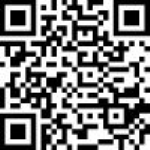應用診斷測驗結合答題信心探究跨年級學生簡單暨串聯電路之理解及影響來源
作者:林靜雯(國立東華大學課程設計與潛能開發學系暨科學教育研究所)、吳育倫(臺北市立教育大學應用物理暨化學系科學教育組)
卷期:58卷第2期
日期:2013年6月
頁碼:25-56
DOI:10.3966/2073753X2013065802002
摘要:
本研究以量化調查輔以部分質性晤談,運用診斷測驗結合答題信心及影響概念來源之自評,診斷331位接受電路教學前之三年級生,與335位教學後之五年級生於簡單暨串聯電路一主題中真正理解、猜答及知識缺乏、另有答題類型之情形,並進一步探究其中正確及典型另有答題類型的影響來源。結果發現,整體學生之正確答案多屬真正理解,錯誤答案多屬另有答題類型。其中,跨年級學生皆有之另有答題類型,為較難因教學而概念改變者,包括「電池體積大小影響電流多寡與燈泡亮度」等三種。此外,影響三年級生典型另有答題類型的來源為「直覺」,而五年級生則為「實驗」及「直覺」。據此,研究者建議於教學時可考慮以認知衝突情境及電路系統化基模,重建學生的直覺推理。
關鍵詞:答題信心、答題類型、電路、影響答題類型的來源
 《詳全文》
《詳全文》

Journal directory listing - Volume 58 (2013) - Journal of Research in Education Sciences【58(2)】June
Application of a Diagnostic Instrument with Item Confidence to Explore across Graders’Understanding of Simple and Series Circuits and Their Sources
Author: Jing-Wen Lin(Graduate Institution of Science Education and Department of Curriculum Design and Human Potentials Development, Nantioal Dong Hwa University)、Yu-Lun Wu(Science Eduction Division,Department of Applied Physics and Chemistry, Taipei Municipal University of Education)
Vol.&No.:Vol. 58, No. 2
Date:June 2013
Pages:25-56
DOI:10.3966/2073753X2013065802002
Abstract:
This study is a quantitative survey with several qualitative interviews of participants. A diagnostic test with item confidence and source of an answer was used to diagnose 331 third graders’ and 335 fifth graders’ adequate understanding, guessing, knowledge deficiency, or alternative answering type in the topic of simple and series circuits. Moreover, the sources of the correct answers and alternative answering types were further examined. The results show that students’ correct answers are mostly adequate in understanding, but incorrect answers are alternative answering types. The alternative answering types that both third and fifth graders have are difficult to conceptual change by informal teaching. They are “the volume of a battery influences the strength of current and the light degree of a bulb” and two other answering types. Furthermore, the source of the third graders’ typical alternative types is “intuition,” and those of the fifth graders are “experiment” and “intuition.” This study suggests using cognitive conflict and a system schema of a circuit to reconstruct students’ intuitive reasoning.
Keywords:item confidence, answering type, circuit, source of an answer